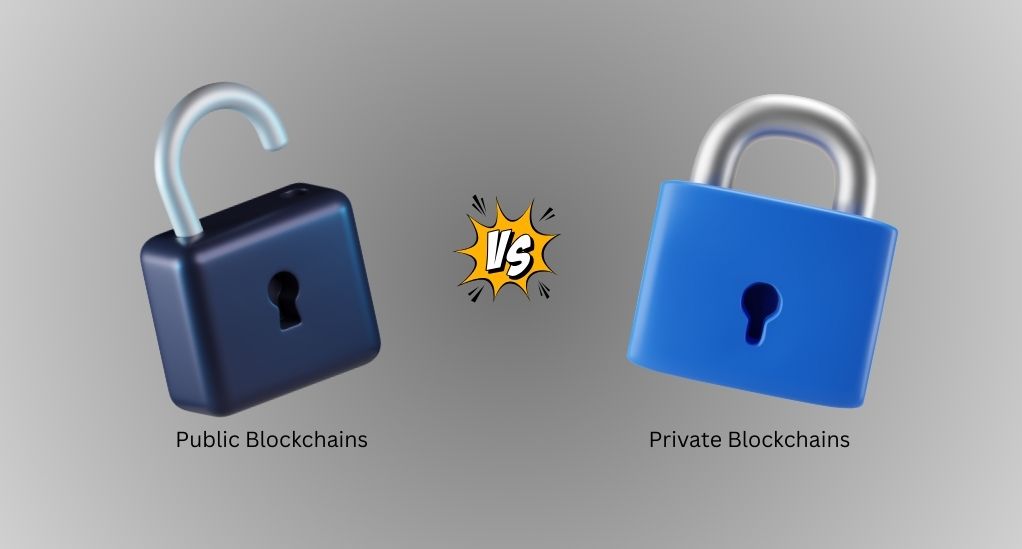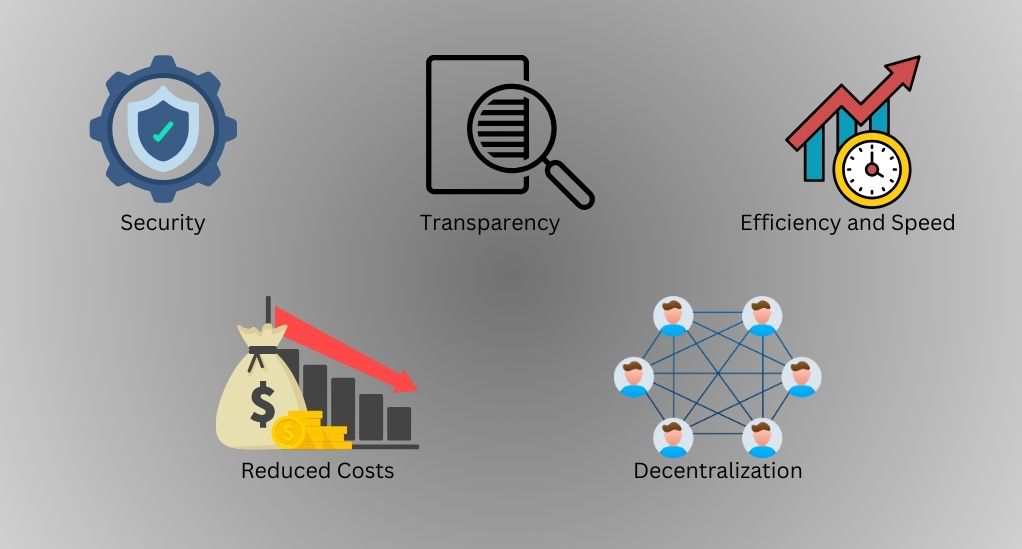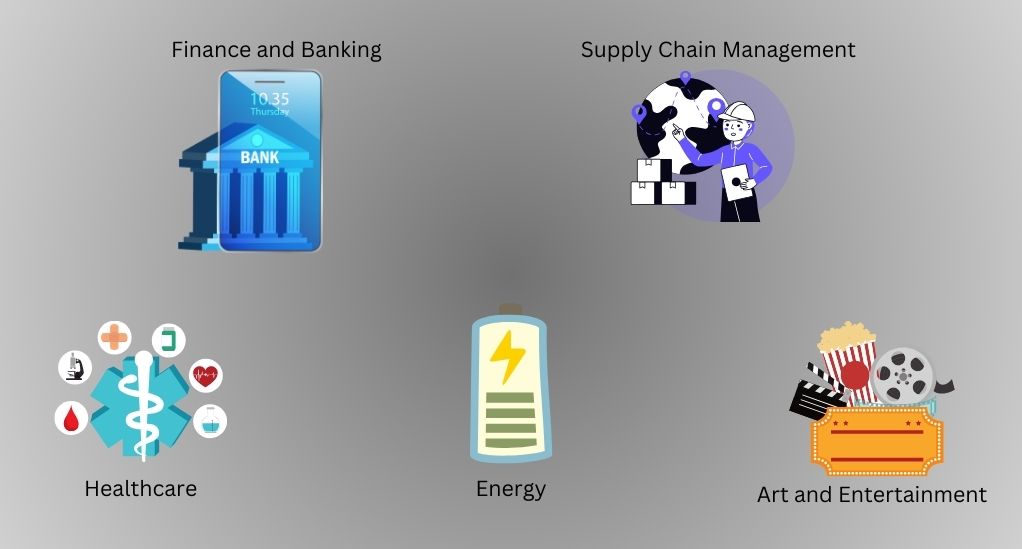Demystifying Blockchain Technology: A Comprehensive Guide
Blockchain technology has emerged as one of the most revolutionary innovations of the digital age. It’s often associated with cryptocurrencies like Bitcoin, but its applications go far beyond digital currencies. In this section, we’ll explore the fundamentals of blockchain technology, understand its core concepts, and delve into why it’s considered a game-changer in various industries.
What Is Blockchain Technology?

At its core, blockchain is a decentralized and distributed ledger technology. It enables the secure and transparent recording of transactions across a network of computers. Unlike traditional centralized systems, where a single entity has control over the data, blockchain operates on a peer-to-peer network. Each participant, or node, in the network stores a copy of the entire blockchain.
Key Components of Blockchain:
- Blocks: Transactions are grouped into blocks. Each block contains a set of transactions and a unique identifier called a “hash.” The hash of a block also includes the hash of the previous block, creating a chain of blocks—hence the name “blockchain.”
- Decentralization: There is no central authority or intermediary in blockchain. All participants have equal rights and control over the network.
- Transparency: All transactions on the blockchain are visible to every participant. This transparency reduces the risk of fraud and manipulation.
- Immutability: Once a transaction is added to the blockchain, it becomes extremely difficult to alter or delete. This immutability is achieved through cryptographic techniques.
- Consensus Mechanism: Blockchain networks use consensus algorithms to validate and agree on transactions. The most well-known consensus mechanism is “proof of work” (PoW), used by Bitcoin.
The Significance of Blockchain
Blockchain technology has gained immense importance for several reasons:
1. Security
Blockchain employs advanced cryptographic techniques to secure transactions. Each block links to the previous one through a cryptographic hash, making it highly resistant to tampering. This makes blockchain a trusted technology for sensitive applications like financial transactions and identity verification.
2. Transparency
The transparent nature of blockchain ensures that all transactions are visible to network participants. This transparency reduces the potential for fraud and promotes trust among users.
3. Decentralization
The absence of a central authority or intermediary means that blockchain operates on a peer-to-peer network. This decentralization reduces the risk of single points of failure and enhances system reliability.
4. Trustless Transactions
Blockchain allows for trustless transactions, meaning users can interact and transact without needing to trust a central entity. The trust is placed in the technology itself, backed by cryptographic security.
5. Disruption of Industries
Blockchain has the potential to disrupt various industries, including finance, healthcare, supply chain, and more. Its applications range from enabling cross-border payments to verifying the authenticity of products.
How Does Blockchain Work?
Understanding the inner workings of blockchain is crucial to grasp its full potential. In this section, we’ll explore the mechanics of blockchain, how transactions are processed, and the decentralized nature that sets it apart from traditional systems.
Understanding the Concept of Blocks and Chains
1. Blocks: The Foundation of Blockchain
Imagine a blockchain as a digital ledger comprising a series of blocks. Each block contains a batch of transactions. These transactions can represent anything from cryptocurrency transfers to records of ownership, contracts, or even votes in a blockchain-based election.
2. The Hash Function: Securing Blocks
Security is paramount in blockchain. To ensure the integrity of each block, a cryptographic hash function is used. This function takes the data within the block, processes it, and generates a unique string of characters, which is the hash. Any change in the block’s content would result in a completely different hash.
3. The Chain: Linking Blocks Together
Here’s where the magic happens. Each block in a blockchain contains the hash of the previous block. This linkage creates a chain of blocks, hence the name “blockchain.” If you were to alter the data in a block, it would not only change that block’s hash but also the subsequent blocks’ hashes. This interconnectedness ensures that any tampering with one block would be immediately noticeable, maintaining the blockchain’s security.
Decentralization: Key Principle of Blockchain
1. Nodes: The Network Participants
To maintain the decentralized nature of blockchain, multiple participants, known as nodes, exist on the network. Nodes can be individuals or organizations, and they all have a copy of the entire blockchain.
2. Consensus Mechanism: Validating Transactions
Nodes work together to validate and record transactions. The process of verifying transactions and adding them to the blockchain is achieved through a consensus mechanism. The most famous mechanism is “proof of work” (PoW), used by Bitcoin. In PoW, nodes, called miners, compete to solve complex mathematical puzzles. The first one to solve it gets the privilege of adding a new block to the blockchain.
3. Immutable and Trustworthy Ledger
The combination of cryptographic security, decentralized nodes, and consensus mechanisms makes the blockchain an immutable and trustworthy ledger. Once a transaction is added to the blockchain, it becomes nearly impossible to alter or erase, ensuring data integrity.
Cryptography in Blockchain

Cryptography is at the heart of blockchain technology, ensuring the security and privacy of transactions. In this section, we’ll explore the role of cryptography in blockchain, the use of cryptographic keys, and how they contribute to the integrity of the blockchain.
Role of Cryptography in Securing Transactions
1. Encryption: Protecting Data
Blockchain transactions are encrypted to safeguard sensitive information. When a user initiates a transaction, the data is transformed into an unreadable format using complex mathematical algorithms. This ensures that only authorized parties can decipher and access the transaction details.
2. Digital Signatures: Proving Ownership
Digital signatures play a crucial role in blockchain security. When a user sends a transaction, they sign it with their private key, creating a digital signature. The recipient can then use the sender’s public key to verify the authenticity of the transaction. This process ensures that transactions are tamper-proof and only initiated by authorized individuals.
Public and Private Keys: The Foundation of Security
1. Public Key:
Think of your public key as your blockchain address. It’s a cryptographic string that you share openly with others. Anyone can use your public key to verify transactions you’ve initiated, ensuring transparency.
2. Private Key:
Your private key is the secret key to your blockchain assets. It must be kept secure and confidential. It allows you to sign transactions, proving ownership and authorizing transfers. Losing your private key means losing control over your blockchain assets.
3. Key Pair: Public and Private Key
A key pair consists of a public key and a private key. They are mathematically related, but it’s computationally infeasible to derive the private key from the public key. This ensures that your private key remains private.
4. Security Measures
To maintain the security of blockchain assets, users are advised to follow best practices such as:
- Generating strong, unique keys.
- Using hardware wallets for added security.
- Implementing multi-signature wallets for shared control.
Cryptography is the cornerstone of blockchain security, making it extremely challenging for unauthorized individuals to manipulate or compromise the blockchain. The combination of encryption, digital signatures, and key pairs ensures the confidentiality and integrity of transactions.
The Blockchain Network
The blockchain network is a key component that sets blockchain technology apart from traditional centralized systems. In this section, we’ll explore the structure of the blockchain network, the roles of nodes and miners, and the consensus mechanisms that ensure the network’s reliability.
Nodes, Miners, and Consensus Mechanisms
1. Nodes: The Backbone of Blockchain
Nodes are the participants in the blockchain network. They play a pivotal role in maintaining the integrity of the ledger. Here’s what you need to know about nodes:
- Each node has a copy of the entire blockchain.
- Nodes validate and relay transactions to ensure they meet the network’s rules.
- The decentralized nature of nodes enhances the system’s resilience against failures.
2. Miners: Securing the Network
Miners are a subset of nodes with a unique responsibility—adding new blocks to the blockchain. Here’s how miners contribute to blockchain security:
- Miners compete to solve complex mathematical puzzles, a process known as “mining.”
- The first miner to solve the puzzle gets the privilege of adding a new block to the blockchain.
- Mining requires substantial computational power and energy, which acts as a deterrent against malicious actors.
3. Consensus Mechanisms: Ensuring Agreement
Consensus mechanisms are protocols that ensure all nodes agree on the state of the blockchain. The most common mechanisms include:
- Proof of Work (PoW): Used by Bitcoin, PoW requires miners to solve mathematical puzzles to add a block. It’s energy-intensive but highly secure.
- Proof of Stake (PoS): In PoS, validators (instead of miners) create blocks based on the amount of cryptocurrency they “stake” as collateral. It’s energy-efficient but requires trust in validators.
- Delegated Proof of Stake (DPoS): A variation of PoS where users vote for a limited number of validators to create blocks.
Public vs. Private Blockchains

1. Public Blockchains: Open and Transparent
Public blockchains, like Bitcoin and Ethereum, are open to anyone. Key characteristics:
- Anyone can participate as a node or miner.
- Transactions are visible to all participants.
- High security due to decentralization.
2. Private Blockchains: Controlled Access
Private blockchains restrict access to a select group. Key characteristics:
- Controlled by a single organization or consortium.
- Transactions may not be visible to the public.
- Greater control but lower decentralization.
The choice between public and private blockchains depends on the use case and the level of control and transparency required.
Use Cases and Applications
Blockchain technology has evolved beyond its initial use case in cryptocurrencies. It has found applications in various industries, offering innovative solutions to long-standing problems. In this section, we’ll explore some of the most notable use cases and applications of blockchain.
Cryptocurrency: The First Blockchain Application
1. Bitcoin: Digital Gold
Bitcoin, the first cryptocurrency, remains one of the most significant use cases for blockchain. It serves as a decentralized digital currency, allowing peer-to-peer transactions without the need for intermediaries like banks. Key features:
- Limited supply (21 million coins).
- Security through PoW.
- Store of value and medium of exchange.
2. Ethereum: Smart Contracts and Decentralized Apps (DApps)
Ethereum expanded blockchain’s capabilities by introducing smart contracts. These self-executing contracts automate complex tasks when predefined conditions are met. Ethereum also supports decentralized applications (DApps). Key features:
- Turing-complete programming language for smart contracts.
- Launchpad for innovative DApps.
Beyond Cryptocurrency: Real-World Applications
1. Supply Chain Management
Blockchain enhances transparency and traceability in supply chains. It allows tracking of products from source to consumer, reducing fraud and ensuring product quality. Example: IBM’s Food Trust for food traceability.
2. Identity Verification
Blockchain can revolutionize identity verification, providing secure and user-controlled digital IDs. Users can grant access to their information, enhancing privacy. Example: Sovrin for decentralized identity.
3. Voting Systems
Blockchain-based voting systems can increase transparency and security in elections. Votes are recorded immutably, reducing the risk of fraud. Example: Voatz for mobile voting.
4. Cross-Border Payments
Blockchain facilitates faster and cheaper cross-border transactions, reducing the need for intermediaries. Ripple’s XRP and Stellar are notable examples.
5. Healthcare Data Management
Patient records can be securely stored and shared among healthcare providers with patient consent. This ensures data accuracy and privacy. Example: MedRec for medical records.
6. Intellectual Property and Copyright
Blockchain can protect intellectual property rights by timestamping content creation and ownership changes. Example: KodakOne for image rights management.
7. Tokenization of Assets
Assets like real estate or art can be tokenized, making them divisible and accessible to a broader range of investors. Example: RealT for real estate tokenization.
Benefits and Challenges of Blockchain
Blockchain technology offers a wide range of benefits, but it also comes with its fair share of challenges. In this section, we’ll explore the advantages of blockchain as well as address some common concerns and limitations.
Advantages of Blockchain Technology

1. Security
- Tamper-Resistance: Blockchain’s immutability and cryptographic security make it highly resistant to fraud and manipulation.
- Decentralization: The absence of a central authority reduces the risk of single points of failure.
2. Transparency
- Visibility: All transactions are visible to network participants, promoting trust and accountability.
- Traceability: Blockchain enables tracking of the origin and journey of assets or data.
3. Efficiency and Speed
- Fast Transactions: Blockchain can process transactions faster than traditional systems, especially for cross-border payments.
- Automation: Smart contracts automate tasks, reducing manual intervention and errors.
4. Reduced Costs
- Elimination of Intermediaries: Blockchain eliminates the need for intermediaries, reducing transaction fees.
- Efficiency Gains: Streamlined processes result in cost savings.
5. Decentralization
- Equitable Access: Anyone can participate in a decentralized blockchain network, fostering inclusion.
- Trustless Transactions: Users don’t need to trust a central entity, as trust is placed in the technology itself.
Addressing Common Concerns and Limitations
1. Scalability
- Network Congestion: High transaction volumes can lead to network congestion. Solutions like layer 2 scaling are being explored.
2. Energy Consumption
- Proof of Work (PoW): Energy-intensive mining processes have raised concerns. Some blockchains are transitioning to more eco-friendly consensus mechanisms.
3. Regulatory Challenges
- Legal Uncertainty: Evolving regulations can pose challenges, particularly for cryptocurrency adoption. Regulatory clarity is essential.
4. Privacy
- Public Blockchains: Privacy concerns arise from the transparency of public blockchains. Privacy-focused solutions like zero-knowledge proofs are being developed.
5. Interoperability
- Isolated Networks: Different blockchains often operate in isolation. Efforts to achieve interoperability are ongoing.
Overcoming Challenges and Harnessing Blockchain’s Potential
While blockchain faces challenges, ongoing research and development are addressing these issues. Innovations in consensus mechanisms, scalability solutions, and privacy enhancements are shaping the future of blockchain technology.
Future Trends and Innovations
Blockchain technology is continually evolving, and several exciting trends and innovations are shaping its future. In this section, we’ll explore the latest developments and the industries that are poised for transformation.
The Evolution of Blockchain: From Smart Contracts to NFTs
1. Smart Contracts
- Self-Executing Contracts: Smart contracts are programmable agreements that automatically execute when predefined conditions are met. They are revolutionizing industries such as finance, legal, and supply chain management.
- DeFi (Decentralized Finance): The rise of DeFi platforms is driven by smart contracts, enabling users to access financial services without traditional intermediaries.
2. Non-Fungible Tokens (NFTs)
- Digital Ownership: NFTs represent ownership of unique digital assets, including art, music, virtual real estate, and collectibles.
- Tokenization of Assets: NFTs are expanding to tokenize real-world assets like real estate and luxury goods.
3. Blockchain in Gaming
- In-Game Assets: Blockchain is enabling the creation and ownership of in-game assets as NFTs, fostering player-driven economies.
- Gaming Metaverse: The concept of a decentralized gaming metaverse is gaining momentum.
Industries Set to Be Transformed by Blockchain

1. Finance and Banking
- Digital Payments: Blockchain is revolutionizing cross-border payments, making them faster and more cost-effective.
- Tokenization of Assets: Traditional assets like stocks and real estate are being tokenized, providing fractional ownership.
2. Supply Chain Management
- Provenance Tracking: Consumers can trace the origin and authenticity of products, enhancing transparency.
- Efficient Logistics: Blockchain optimizes supply chain logistics, reducing inefficiencies.
3. Healthcare
- Secure Health Records: Blockchain ensures the privacy and security of patient data.
- Drug Traceability: It enhances pharmaceutical supply chain transparency.
4. Energy
- Grid Management: Blockchain facilitates peer-to-peer energy trading and efficient grid management.
- Carbon Credits: It can track and trade carbon credits to address climate change.
5. Art and Entertainment
- Art Provenance: Blockchain verifies the authenticity and provenance of art, reducing art fraud.
- Digital Content Ownership: NFTs are transforming how digital content is owned and monetized.
Getting Started with Blockchain
If you’re eager to explore blockchain further, here are some steps to get started:
- Educate Yourself: Start by learning the basics of blockchain technology, including its concepts, terminology, and potential use cases.
- Experiment: Set up a digital wallet, acquire some cryptocurrency, and experiment with blockchain applications and transactions.
- Explore Online Courses: Many online courses and tutorials can deepen your understanding of blockchain development, smart contracts, and more.
- Join the Community: Engage with the blockchain community, attend conferences, and participate in discussions to stay updated on the latest developments.
Conclusion
In conclusion, blockchain technology is more than a buzzword; it’s a transformative force. From its origins in cryptocurrencies to its current applications in smart contracts and NFTs, blockchain is revolutionizing industries across the board. Its core principles of security, transparency, and decentralization are reshaping how we interact with data and conduct transactions.
For those embarking on their blockchain journey, the opportunities for learning, experimentation, and innovation are boundless. Staying informed about the latest developments and engaging with the vibrant blockchain community is not just an option but a necessity.
As you explore this dynamic field, remember that blockchain is not just a technology; it’s a paradigm shift that’s redefining our digital landscape. Whether you’re a newcomer or a blockchain enthusiast, embrace the exciting possibilities it offers. Start your journey today, and you’ll be contributing to the ongoing evolution of blockchain, shaping the digital future in profound and meaningful ways.


Leave a Reply